- Home
- Gary Vaynerchuk
Jab, Jab, Jab, Right Hook Page 13
Jab, Jab, Jab, Right Hook Read online
Page 13
Good use of links: The image acts as a gateway to longer-form content. Clicking on the photo takes you straight to an article on the company’s website elaborating on the thinking and experimentation that goes behind successful pairings of wine and cheese, as well as information about how to sign up for the tours and tastings offered on-site at the winery.
This micro-content throws a satisfying jab at both wine lovers and social media users, and for that the company gets a triple thumbs-up.
CHOBANI: Reaching the Heart of Its Users
As we’ve mentioned, the Pinterest audience is 80 percent female, and 50 percent of all Pinterest users have kids. With this child-centered jab, Chobani shows that it understands how to strike at the heart of the Pinterest audience.
The photo: Fun, colorful, simple. This image was chosen to make parents smile, and it probably did given the number of repins.
The copy: Fun, colorful, simple.
The board: It’s smart to play toward kids, and even smarter for the brand to position itself as the source for fun, healthy snack ideas that will make mothers—and probably dads, too—feel like Superparents.
Before posting anything on this platform, ask yourself if your post could pass the Pinterest test: Could it double as an ad or act as an accompanying photo to an article featured in a top-flight magazine? If not, it doesn’t belong here. For this jab, however, Chobani gets a definite yes.
ARBY’S: Sending the Wrong Message
This is as bad as it gets.
The photo: The photo itself is cropped so awkwardly, the outline of the turnover has a stair-shaped pattern to it, making it look as though the pastry is an escapee from a vintage Nintendo game where it used to threaten to smother your avatar in corn syrup and shortening.
The copy: “Arby’s Apple Turnover.” Wow. That’s some creative text.
The link: Surprisingly, the Arby’s team did know enough to link the photo to the Arby’s website.
Aside from correctly linking the Pinterest post to the company website, this piece of content was a waste of the two minutes it took Arby’s digital team to create. It looks like Arby’s has a Pinterest account simply because someone told them they should have a Pinterest account. If they had any real interest in developing a Pinterest strategy, they would have concentrated on improving the quality of the photography and creating art that would appeal to the mostly female audience that might accidentally stumble across its board (because no one in their right mind would ever actually share this content). With an ounce of effort, they could have made this pale, pasty piece of pastry look beautiful, or at least less like something that’s been sitting in a 7-Eleven display case since 1985. As it is, the only message Arby’s is sending to consumers is to stay the hell away.
RACHEL ZOE: Small Mistakes Have Big Impact
Rachel Zoe provides an example of how often it’s just small nuances that keep good jabs and right hooks from being great ones.
The photo: We see a beautiful bag, and a clear set of steps to follow to enter the Pin to Win contest. It shows creative, aggressive initiative to gamify pins and asks customers to take a social action in exchange for the opportunity to win something. The game feels authentic to the platform.
The links: Click on the photo of the bag, and you’re taken to Neiman Marcus to make a purchase. Click on the link in the caption below the photo, and you go straight to the official rules. Someone at Rachel Zoe is thinking clearly.
The copy: Here’s the hiccup. The copy merely repeats the three clear steps we just read in the photo. Why? With this mistake, Rachel Zoe weakened their pin’s value proposition. It would have been more interesting and beneficial to customers if Zoe had added a few thoughts about the bag, and then followed up with the link to the official rules page.
In fact, what’s lacking in this pin as well as on the entire board where it appears is what’s lacking on a lot of celebrity Pinterest pages—the humanity. It’s Rachel Zoe’s name and face at the top of every pin; it would be nice to feel like Rachel Zoe had actually pinned it.
The mistakes surrounding this pin are small, but they make a tremendous difference.
BETHENNY FRANKEL: Linking to Nowhere
Bethenny Frankel, inventor of the Skinnygirl margarita mix and cocktail brand, is a heroine to every woman who loves to wear formfitting jeggings as much as she loves to drink. It’s just a shame she didn’t pay as much attention to the details on her Pinterest boards as she does with her product.
The photo: It’s refreshing to occasionally see an unvarnished photo on Pinterest, especially on a celebrity page. You really believe Bethenny might have taken this picture herself. Normally the smeary quality is not something most people would want to associate with a food or drink product, but the picture received some solid engagement, so the DIY nature of the shot clearly didn’t turn too many people off. For that, the photo gets a pass.
The copy: Skinnygirl Pomegranate Margarita. There’s not much else to say, especially when a click on the picture will probably take the consumer to a recipe page or someplace fun on the Skinnygirl website. Oh . . . wait . . .
The link: When consumers link out from the picture of the pomegranate margarita, they wind up on a 404 error page, the kind that says “Page not found.” That’s just irresponsible. The apology offered is cute, as is the picture of the sleeping dog, but it doesn’t make up for the fact that the company just wasted its customer’s time and goodwill. It’s a blunder that makes the brand look unprofessional.
UNICEF: Distributing, Not Storytelling
It’s encouraging to know that UNICEF is progressive enough to be on Pinterest. Unfortunately, they seem to be missing the point.
Photo: This piece of content illustrates a classic example of how brands mistakenly use social media platforms as distribution centers instead of storytelling venues. This photo appears on two boards. It was first pinned on one called “Can You See Me?” and then repinned on a board called “Nonprofit Media.” By reposting the same photo and copy on multiple boards, UNICEF is playing for quantity of impressions instead of quality of impressions. But this strategy hamstrings the potential power of every photo on the site. It would be in the brand’s best interest, especially a brand armed with as much emotionally charged content as this one, to curate boards appropriately and channel their consumers’ emotions into clear calls to action. The photo would have gotten more views and more engagement if it had been posted on a board that directly appealed to people interested in helping young AIDS victims and orphans.
If UNICEF ever starts displaying its incredible photo collection with some thought to how to tell the Pinterest audience its many stories, it should start to see some impressive activity.
LAUREN CONRAD: Speaking Pinterest
Lauren Conrad’s content deserves a shout-out here because it speaks fluent Pinterest. Everything about it is designed to appeal to the high-end, female audience that loves the platform. This piece could easily work as an ad or the picture accompanying an article about Lauren Conrad’s workouts, and in fact, if you click on the picture, you’re taken to Conrad’s blog, where she suggests a workout to get your legs in shape for summer. With almost 2,500 repins, this pin shows what can happen when a celebrity brand speaks a platform’s native language. This jab reflects clear respect for the platform and a commitment to her demographic. It feels right-on.
LULULEMON: Missing the Point
Once again, one mistake derailed a potentially knockout right hook.
The photo: Infographics enjoy high levels of engagement on Pinterest, and Lululemon’s gamification of the perfect yoga mat search is a creative and clever use of the medium.
The link: There is none. A click on the photo takes us to another version of the photo. Pinterest is the one place where linking out drives traffic and drives action. Why didn’t Lululemon link to a retail page showing a collection of the mats described in the post so shoppers who find their perfect “mat(ch)” can actually buy one?
How d
isappointing to see such a fine piece of creative go to waste.
Questions to Ask About Your Pinterest Content
Does my picture feed the consumer dream?
Did I give my boards clever, creative titles?
Have I included a price when appropriate?
Does every photo include a hyperlink?
Could this pin double as an ad or act as an accompanying photo to an article featured in a top-flight magazine?
Is this image easily categorized so people don’t have to think too hard about where to repin it on their boards?
ROUND 6:
CREATE ART on INSTAGRAM
Founded: October 2010
As of December 2012, Instagram boasted 130 million monthly active users.
40 million photos are uploaded per day.
It took Flickr two years to reach the milestone of 100 million uploaded pictures; it took Instagram eight months.
Instagram photos generate 1,000 comments per second.
In June, 2013, Instagram launched video sharing.
Instagram started out as a geolocation app called Burbn. When cofounders Kevin Systrom and Mike Krieger decided to revamp the app, they stripped everything out except the photo, comment, and like functions.
Instagram is another visual-centric social network. Like Pinterest, it has what I like to call “baked-in utility,” meaning that it’s really good at what it’s supposed to do, which is help you take better mobile photographs. Yet it is a vastly more challenging platform for marketers. Unlike Pinterest, where repinning is encouraged, users can only share their own Instagram photos. And whereas on Pinterest you can embed a hyperlink into your photo that with one click will direct users to your product or service page, Instagram is a closed loop. Anyone who clicks on your Instagram photo gets brought back to Instagram. Smart move for Instagram, not so good for marketers interested in sending traffic to a specific online location.
Given the app’s limitations as a business tool, why should brands scramble to start posting photos? For the same reasons they might post ads in Fine Cooking, Vogue, People, or even Traveler of Charleston magazine. After all, if you take out the editorial content in between the ads, a print magazine is, in essence, a small-format gallery of beautiful, provocative, or tantalizing images. It’s a consumption platform, and that’s all Instagram is, too. It’s a slightly more interactive experience than a print magazine, because users can like an image and offer comments. There’s also an element of shareability and distribution in that you can connect your account to Facebook and Twitter, thus increasing awareness around your product and promoting word of mouth. Also, users can follow each other, even if they can’t formally “regram.” But really, when you load photos on the service, you’re putting out content that no one can immediately do anything with, just like when you place ads in magazines. And you’re doing it for the same reason: scale. You advertise in magazines because you know you can reach a dedicated audience, measurable by subscription rates. Instagram has incredible scale, 100 million monthly active users as of the writing of this book. With one new user joining every second, it’s likely that number could increase by another 15 million by the time this book goes to press. If it’s worth it to your brand to pay tens or even hundreds of thousands of dollars to place beautiful content in magazines, don’t you think it’s worth putting similar content on Instagram for free?
It’s that scale at low cost that makes up for Instagram’s lack of social value. The app’s rapid growth rate proves that people are increasingly drawn to mobile, image-based content. As always, where consumers go, so should marketers. Consider Instagram as one of the great jabbing platforms, there to set the tone, tell your story, reinforce your brand, and build impressions.
Not that it’s impossible to throw Instagram right hooks. Let’s remember that there was no retweet option in the original incarnation of Twitter. Before Twitter developed the function, pioneers, including some of my friends and me, would share other people’s tweets by cutting and pasting them into their own feeds. People are taking screenshots of photos they like on Instagram and reposting them, or using newly developed apps to the same end. There’s always a work-around if you want one. You can’t embed a hyperlink into your picture, but there’s no reason why you can’t insert a URL into your description. People aren’t dumb; they’ll know what to do. You could even tell people to go to your link and use the code “Instagram” to get 10 percent off your product or service (though as we’ve discussed, this call to action won’t overindex or drive business as much as if it were linkable). Should you do this often? No, inserting too many calls to action will feel like spam. But every now and then, in the midst of jabbing, a right hook is perfectly acceptable. In fact, with so few right hooks currently in play, your right hook might be a fun surprise. But only for so long, because as we know, marketers ruin everything.
A FEW TIPS TO CREATING SUCCESSFUL INSTAGRAM CONTENT
Make it “Instagram.” People love Instagram because of the quality of the content that has up until now been made available there. No one is going to Instagram to see advertisements and stock photos. Native Instagram content is artistic, not commercial. Use your content to express yourself authentically, not commercially.
Reach the Instagram generation: Learn to make Instagram work for you—it will be your gateway to the next generation of social users. The kids will be on Instagram (they’re already there); their parents will still be on Facebook. I believe this as strongly as I believed back in 2011 that Facebook would buy Instagram. They did, in the spring of 2012, for a billion dollars in cash and stock. I justified the buy on Piers Morgan the next day, explaining that if you looked at the evolution of content from Flickr, to Myspace, to Facebook, Tumblr, and Pinterest, it was clear that pictures were gaining in importance and were going to rule the social media world.* When Instagram started building massive momentum in 2011, there was no way that Facebook could ignore it. Despite everything Facebook had—News Feed, pages, ads—this service built on mobile and pictures posed a real threat to a company that wanted to be the best photo-sharing service around. In fact, it posed the only threat Facebook has ever faced. They had to buy it. I said that I thought the billion dollars Facebook paid was a steal, and I was ridiculed. But go figure—no one is laughing now.
Go crazy with your hashtags: Hashtags matter here, maybe even more than they do on Twitter. In Twitter, the hashtag can sometimes be the sprinkle—a dash of irony, a smattering of humor that you use once, maybe twice per day. On Instagram, hashtags are the whole darn cupcake. You can’t overuse them. Putting out five, six, or even ten hashtags in a row per post isn’t a bad way to communicate. And if you don’t want hashtags to clutter your post copy, no problem. Put your hashtags in a comment on your photo and it accomplishes the same thing. One click on a hashtag brings a user to a whole page of other images with the same hashtag. There is no better way to earn more impressions and gain followers. Hashtags are the doorways through which people will discover your brand; without them, you’re doomed to invisibility.
Become Explore-worthy: The most gorgeous, evocative content on Instagram gets streamed into something called the Explore page, which exposes your content to all of Instagram, not just users who have chosen to follow you. Instagram swears that the number of likes that content receives isn’t the only deciding factor as to what makes it into the Explore tab, but it’s surely an important one. It’s a phenomenal way to build impressions. Most small businesses and even Fortune 500 brands will most likely never find themselves in this exclusive club, but any celebrities reading this book should take note of the huge opportunity.
COLOR COMMENTARY
BEN & JERRY’S: Sharing the Love
Ben & Jerry’s micro-content is the perfect flavor for Instagram—spare and sweet. Their product delivers such a visual pop, they have no need to insert the logos that are normally an essential part of a good Instagram jab.
It’s always great when a big national brand highligh
ts one of their fans. A Swede who saw fit to post a picture of her snack prep provided this image. You can see the exchange where Ben & Jerry’s reaches out to her to compliment the photo and ask permission to post it on their account at Instagram.com/ebbawallden. The only way this could have been improved would have been if Ben & Jerry’s had added a virtual wink by lining up the bowl with the heart that appears when a fan likes a post.
GAP: Getting the “Social” Behind Social Media
Check out what can happen when you do your friend a favor. He works at the GAP and asks if you would use your awesome pumpkin-carving skills to carve the GAP logo. You oblige. You post a photo of your artwork on Instagram. A week later, you remember to add the appropriate tags: #pumpkin, #gap, #logo. Sure enough, you get a message from GAP asking if they can share it on their Instagram feed.
With this content, GAP shows that it really gets the “social” behind social media, and specifically, knows how to recognize material that is native to the Instagram platform. Holiday-themed content usually receives high levels of engagement, and GAP would have been crazy to skip this stellar opportunity to jab GAP fans, as well as engage with a fellow Instagram user that promoted the brand.
GANSEVOORT HOTEL: Storytelling for Love
This is a clever, artistic photo and a tremendous play. It’s the kind of image that catches the heart and evokes an instant emotion in anyone going through his or her feed. Where it gets ridiculously brilliant is in its native storytelling. When you double-tap the photo, the heart shows up almost exactly in the same location as the heart on the beach. It was probably even cropped in a way to enable that action. With its smart hashtags, this is classic, fun storytelling, the kind of thing that people want to share.

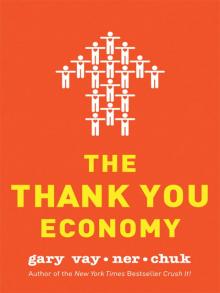 The Thank You Economy
The Thank You Economy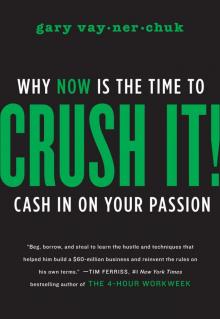 Crush It!
Crush It!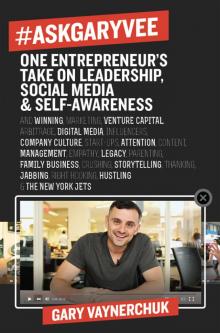 #AskGaryVee
#AskGaryVee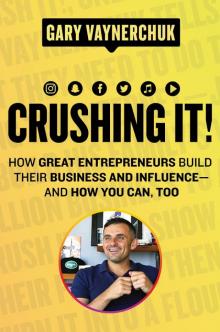 Crushing It! EPB
Crushing It! EPB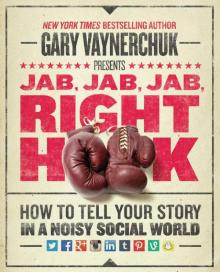 Jab, Jab, Jab, Right Hook
Jab, Jab, Jab, Right Hook